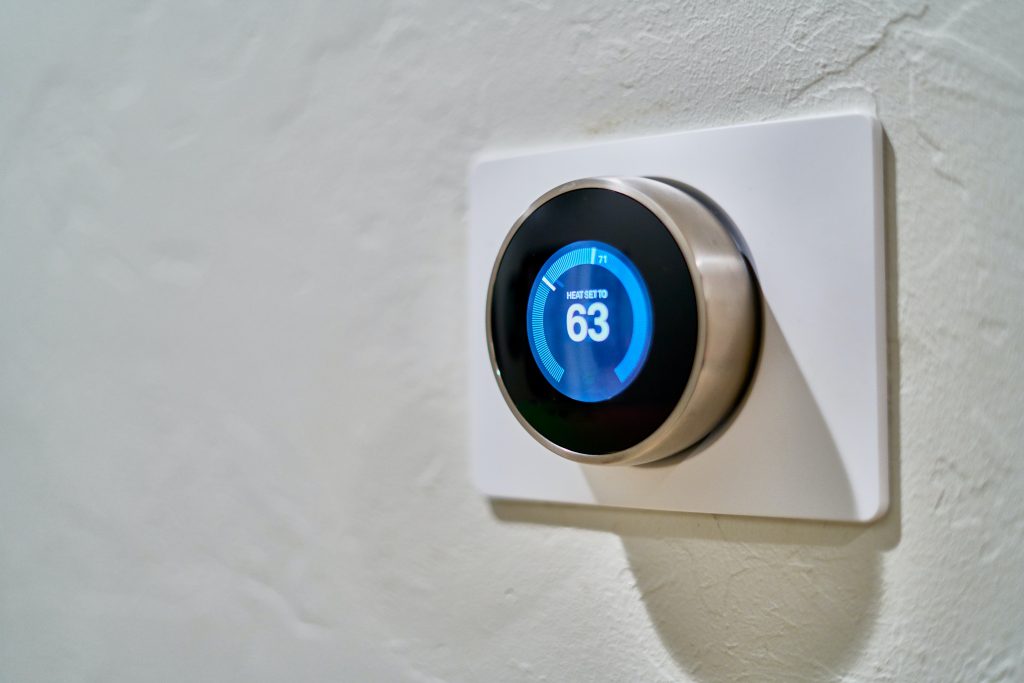Find self-storage near you
Do you need a Removals service?
The Benefits of Climate Control in Self-Storage: Why It Matters

Imagine stepping into your self-storage unit in Bristol after a long winter, only to find your precious photographs damp and warped, or during the heat of summer and discovering your electronic devices have been damaged due to extreme temperature changes. This nightmare scenario is all too real for many people who choose traditional storage units without climate control features. But worry not, because there’s a solution you may not have considered before: Climate-controlled self-storage units. In this blog post, we’ll discuss the many benefits of choosing climate control over standard storage units and why it matters more than you might think! So buckle up and prepare to be amazed by what these temperature-regulated storage havens can offer you and your belongings!
Understanding Climate Control in Self-Storage
Self-storage facilities have been around for decades, helping individuals and businesses store their belongings in secure and convenient locations. But not all storage units are created equal. One major factor that distinguishes one facility from another is whether or not it has climate control. Climate control is a critical feature of storage facilities that helps regulate temperature and humidity levels inside the storage unit. Without climate control, temperatures inside a storage unit can fluctuate widely, especially in extreme weather conditions such as during hot summers or cold winters. Humidity can also build up inside the unit, causing damage to sensitive items like electronics, artwork, and other valuables. Having a basic understanding of climate control in self-storage can help you better appreciate its importance and make informed choices when selecting a storage facility. For instance, imagine you are storing an antique family heirloom, an old clock that was passed down several generations. If the storage unit isn’t climate-controlled, there’s a good chance that the wood may expand or contract due to changes in humidity and temperature levels. The varnish could crack or peel off, permanently damaging the clock and reducing its value. Some people argue that climate-controlled self-storage units are an unnecessary expense. After all, why would someone pay extra money when they could opt for a traditional storage unit? While it’s true that traditional self-storage units are often cheaper than climate-controlled ones, they may not offer the same level of protection for your belongings.
Factors Affecting Climate Control
Temperature and humidity levels are not the only factors affecting self-storage climate control. Here are a few other considerations to keep in mind:
Insulation
Proper insulation is crucial for maintaining a storage unit’s consistent temperature and humidity levels. Without proper insulation, cold air from outside can seep into the unit during winter, while hot air can infiltrate during summer.
Ventilation
Adequate ventilation can help keep stale or musty odours from building up inside a storage unit. It also helps regulate temperature and humidity levels by circulating air around the unit.
Location
Storage units in areas with high humidity or severe weather conditions may require additional climate control measures to ensure that belongings remain protected from damage. Think of it this way: climate-controlled self-storage units are like mini refrigerator cabinets designed to preserve your belongings for extended periods. Just as refrigerators help keep food fresh by regulating temperature and humidity levels inside, climate-controlled storage units perform the same function for your belongings. By understanding how climate control works in self-storage facilities and what factors can affect it, you’ll be better equipped to make informed decisions when selecting a storage unit that suits your needs.
Temperature & Humidity Levels in Storage Buildings
When storing your belongings, temperature and humidity are two of the most crucial factors to consider. It’s important to remember that the climate inside a storage unit can fluctuate, especially if the unit is not climate controlled. For example, during winter, temperatures can drop below freezing, causing water to freeze and damaging sensitive materials such as electronics or musical instruments. On the other hand, heat can cause wood to warp or crack during the summer months. Humidity also plays a vital role in preserving your belongings. High humidity levels can result in mould and mildew growth, while low humidity levels can cause materials such as leather to crack or become brittle over time. For instance, imagine you are storing antique furniture in a non-climate-controlled unit during a particularly humid summer. Over time, this high humidity level could lead to warped wood and even mould growth on the furniture cushions. Additionally, fluctuating temperatures and humidity levels can take their toll on delicate fabrics like silk or fur. This is why it’s essential to choose a storage facility with climate control systems in place. According to industry studies and research conducted by reputable sources such as The Self-Storage Association (SSA), maintaining the optimal temperature and humidity levels can prevent damage caused by extreme variations and help preserve items’ longevity. The ideal temperature for self-storage units ranges from 55°F to 85°F (13°C – 29°C), while humidity should be kept between 30% and 50%. Facilities offering climate control ensure these levels are maintained consistently throughout the year. However, some might argue that renting a non-climate-controlled unit is cheaper and may not be worth paying extra for climate-controlled storage. While it’s true that non-climate-controlled units are more affordable initially, the potential damage resulting from temperature and humidity fluctuations can lead to significant repair or replacement costs in the future. Think of it like investing in preventative healthcare. Yes, it may seem expensive upfront, but in the long run, it can save you the cost of treatment for illnesses that could have been avoided through prevention. Climate-controlled self-storage is an investment in the protection and preservation of your belongings. Now that we’ve covered why climate control is essential, let’s examine the key benefits of selecting a climate-controlled storage unit for your self-storage needs.
Key Benefits of Climate-Controlled Self-Storage
Improved Unit Security and Weather Protection
Climate-controlled units are typically located within buildings with superior security features such as coded gates, surveillance cameras, and reinforced doors. Additionally, the enclosed environment of a climate-controlled unit provides added protection from extreme weather conditions.
Preserving Sensitive Items
Precious items such as artwork, family heirlooms, electronic devices, musical instruments, and photographs require careful temperature regulation and humidity control to remain in good condition. A climate-controlled self-storage unit ensures these items will remain in their best shape as long as possible.
Reduced Risk of Pest Infestation
Uncontrolled temperature and humidity levels can attract pests like mice and insects that thrive in hot and humid environments. Keeping the interior air quality controlled can significantly reduce their presence within self-storage units.
Convenience when Accessing Stored Belongings
A climate-controlled storage facility allows customers to access their units regardless of weather conditions outside. This means they won’t have to dig through snow or deal with waterlogged boxes after heavy rainfall to access their belongings! For instance, imagine you need to grab important documents from your storage unit during a summer thunderstorm. With a climate-controlled unit, there’s no need to worry about getting wet while searching through boxes or trying to protect delicate paper from water damage.
Additional Value for Reselling Purposes
If you intend to sell your belongings at some point in the future, climate-controlled storage is an investment that will likely keep them in better condition and maximise their value over time. With benefits like these, choosing a climate-controlled self-storage unit is advantageous. Now let’s dive into how temperature and humidity control systems are implemented within such units.
Implementing Climate Control Systems
Implementing a climate control system in a self-storage facility is crucial to maintain optimal temperature and humidity levels. Implementing such systems may vary from facility to facility, but it generally involves ensuring that both heating and cooling mechanisms are available for customers to use as required. Additionally, insulation and ventilation systems should be appropriately set up to help preserve the desired temperature levels. One example of an effective climate control system is the use of HVAC units, which regulate temperature and humidity with the help of air conditioning. A self-storage facility may instal such units on each floor or wall section to ensure maximum coverage throughout the building. Advanced systems can even provide individual unit controls, where tenants can adjust temperature levels according to their specific storage needs. Another key component of implementing a climate control system is insulation. When considering insulation materials, it’s important to choose options that will work well in the given environment. For example, foam-based insulators are more effective in wet and humid conditions than fibreglass insulators. Insulation can ensure that fluctuations in external temperatures do not impact unit temperatures significantly. The ventilation system forms another critical aspect of climate control systems. It can direct moist air out of the storage units towards an exhaust point, ensuring air circulation continually throughout the facility. This circulation helps prevent stagnation and reduce condensation build-up within units. Implementing a climate control system offers various benefits to self-storage businesses too. These systems attract customers who worry about damage to their belongings due to poor temperature maintenance, humidity issues, and other environmental conditions. Research reveals that rental rates charged by facilities offering climate-controlled storage spaces are often higher than non-climate-controlled ones. Moreover, monitoring temperature levels with climate control systems enables you to identify faults early enough before they escalate and cause damage or failure to the storage facility equipment. Some critics argue that implementing climate control systems may involve high costs, maintenance requirements, and electricity expenses. While it’s true that initial installation and maintenance will require an investment, the long-term financial benefits far outweigh the costs. For instance, non-climate-controlled storage units are prone to damage from humidity and dampness. Repairs or replacements of these damaged items cost more than the extra expense of maintaining climate control systems in the long term. The added benefits offered by a climate-controlled unit also give facility owners an edge over competitors who only offer standard storage spaces.
Seasonal Self-Storage Considerations
It’s important to consider various seasonal factors when renting a self-storage unit with climate control. In the summer, temperatures tend to be higher, leading to increased humidity levels in storage units without appropriate ventilation or cooling. On the other hand, during winter months, outside temperatures may drop dramatically, causing condensation within units without insulation.
When it comes to self storage in Dubai, climate control is an essential feature to consider. Dubai’s extreme heat and humidity can easily damage sensitive items like electronics, furniture, documents, and artwork. Climate-controlled storage units maintain a stable temperature and humidity level, ensuring your belongings are protected from warping, mold, and other weather-related issues. Whether you’re storing personal or business items, investing in climate-controlled self storage provides peace of mind and long-term preservation of your valuables.
One key consideration is the type of items to store and how they react to changes in temperature. For example, delicate items like antique furniture require stable temperatures throughout the year to maintain their condition and prevent deterioration from humidity. Think of self-storage as a refrigerator for your belongings. Just as refrigerators maintain optimal conditions to preserve food quality, climate-controlled storage facilities provide comparable temperature and humidity regulations to safeguard your valuables’ condition. Another aspect to consider is location. Ideally, customers should look for storage facilities away from flood-prone areas or natural disasters like hurricanes. Such locations can lead to significant structural or water damage that can negatively impact stored items. Finally, tenants must ensure that they pick a sizeable suitable storage space that suits their specific needs considering all seasonal factors in mind. A well-designed space ensures enough room for proper air circulation throughout their stay in the facility, preventing any damage from faulty packing practices.
Here are more tips on How To Keep Your Belongings Safe In Bristol Self Storage.
Common Questions and Responses
What items specifically require climate-controlled storage?
When storing your precious belongings, certain items require climate-controlled storage to avoid damage caused by extreme temperatures and humidity levels. One type of item that necessitates climate control is electronic equipment such as computers, televisions, and printers. According to a study conducted by IBM, temperature and humidity levels above or below specified ranges can cause up to a 5% failure rate in electronics! Leather goods like furniture and clothing also require climate control to avoid mould, mildew, and other forms of damage. High humidity levels can also lead to stiffening, discolouration, and even spoilage of leather. Lastly, antiques and artwork should be kept in a climate-controlled environment to prevent deterioration. Extreme temperatures can cause paint to crack or warp, while high humidity can encourage mould growth on wooden frames. Thus, choosing a facility equipped with climate control is vital for peace of mind when storing your valuable items!
Will selecting a climate-controlled storage unit increase the cost of renting a unit?
Yes, selecting a climate-controlled storage unit will increase the cost of renting a unit. However, it is important to remember that the added cost is worth the investment to protect your stored items from harsh environmental conditions. In addition, the benefits of climate control in self-storage are numerous. Climate control helps prevent mould, mildew, and bacterial growth, which can lead to serious health concerns and property damage. It also protects items from extreme temperatures and humidity levels that can cause warping, cracking, and other forms of damage. Overall, while the cost of a climate-controlled storage unit may be higher than non-climate-controlled options, its benefits and protection make it well worth the investment for anyone looking to store valuable or sensitive items long-term.
What are the potential risks and damages associated with not having climate-controlled storage?
The risks and damages associated with not having climate-controlled storage are numerous and can devastate your valuable items. Temperature fluctuations, humidity, and pests are the top culprits that can wreak havoc on your possessions. Temperature swings can cause significant damage to items such as leather, wood, and electronics. For example, extreme heat or cold can cause vinyl records to warp and crack, paintings to expand or contract, and musical instruments to become unplayable. Humidity levels also significantly role in degrading certain materials, such as paper documents and photographs. High humidity levels can cause paper to turn yellow and become brittle, while low humidity levels make them dry and brittle. Finally, pests such as rodents and insects can invade non-climate-controlled units and wreak havoc on your belongings. They can chew through furniture, clothing, and even electronics. To back up these claims, a study by the Self-Storage Association found that 30% of self-storage units experience pest problems each year. Additionally, a report by the National Archives states that “controlling temperature and humidity are critical for preserving archival records.” Therefore, it is essential to opt for climate-controlled storage to ensure your valuable possessions remain safe from these detrimental risks.
How do temperature and humidity affect stored items?
Temperature and humidity play a crucial role in preserving the quality of stored items in self-storage units. Extreme climate changes can cause irreparable damage, leading to loss and costly replacements. High humidity levels can create a breeding ground for mould, mildew, and bacteria that can deteriorate textiles, paper goods, and electronics. Moreover, fluctuating temperatures can cause materials like wood to warp or crack, while extreme heat can lead to discolouration or melting of plastics. To validate these claims, a study by the Canadian Conservation Institute (CCI) revealed that changes in relative humidity could cause up to 70% of damage to organic materials such as leather, paper, and textiles. Similarly, extreme temperature fluctuations were shown to cause the degradation of colourants in paintings and the yellowing of papers. Therefore, maintaining a stable climate with temperature and humidity control measures is essential for protecting the integrity of precious belongings. Investing in climate-controlled self-storage ensures optimal storage conditions for various items, from photographs and rare collections to antiques and musical instruments. It is vital not to underestimate the importance of climate control in self-storage because it matters significantly when preserving your valuable items.
What should be considered when choosing a self-storage facility with climate control options?
Several factors must be considered when choosing a self-storage facility with climate control options. Firstly, ensuring the facility has the proper insulation to maintain consistent temperatures is essential. Studies have shown that even small temperature fluctuations can cause damage to sensitive items, such as furniture and electronics, leading to long-term financial losses (1). Secondly, it’s crucial to check the humidity levels within the facility. High moisture levels can encourage mould and mildew growth, damaging items beyond repair (2). A reliable climate-controlled storage unit should maintain humidity levels of around 55% (3). Thirdly, it’s necessary to inquire about the type of air filtration system the facility uses. Proper air filtration helps prevent dust buildup and keeps the air fresh and clean inside the unit (4). Finally, choosing a reputable facility with an excellent track record of maintaining climate control systems is essential. Choosing a low-cost option with poor maintenance could lead to costly damages in the long run. In conclusion, when choosing a self-storage facility with climate control options, one must look for proper insulation, humidity control, air filtration systems, and overall reputation before making a final decision.


